Europe has such an enormous range of diversity, culturally and geographically, that it would take years to discover every one of its 44 countries and pick your favorite.
There’s the volcanic, icy beauty of Iceland in the north, and the soft greens and dramatic cliffs of the Norwegian fjords. Or the mountains and castles of Scotland, or the gastronomy and fine art of France.
To the south, the culture is completely different, as is the climate. Perhaps you should head to Italy for a taste of la dolce vita, or Greece for ancient history, and some of the most spectacular beaches in the world.
To help you choose, here are 10 of the most beautiful countries in Europe to consider.
Greece
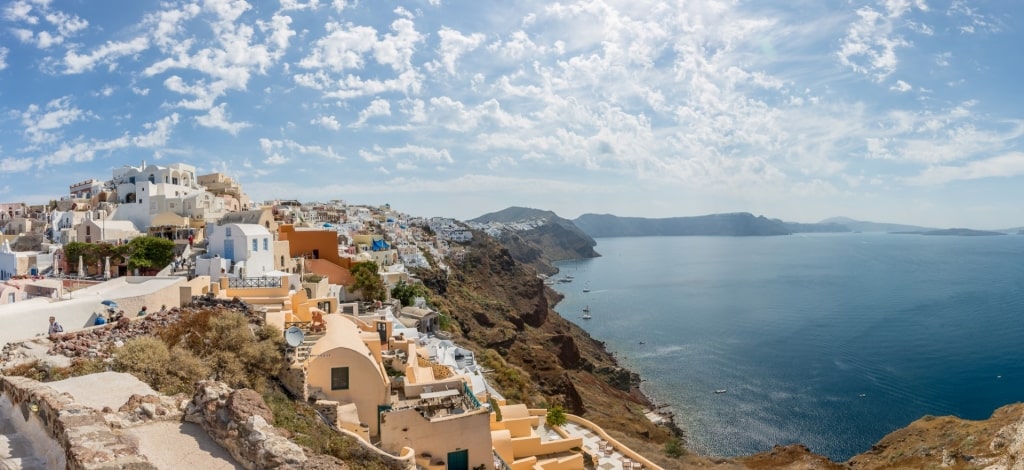
Oia in Santorini, Greece
Greece is not only one of Europe’s oldest countries, the birthplace of democracy, philosophy, medicine and geometry, among others, but also one of its most beautiful.
Sitting on the edge of Europe, with the Balkans to the north, Africa to the south and Asia to the east, its location at the meeting of three continents has not only made it a prized acquisition for the powers that be, but also incredibly geographically diverse.
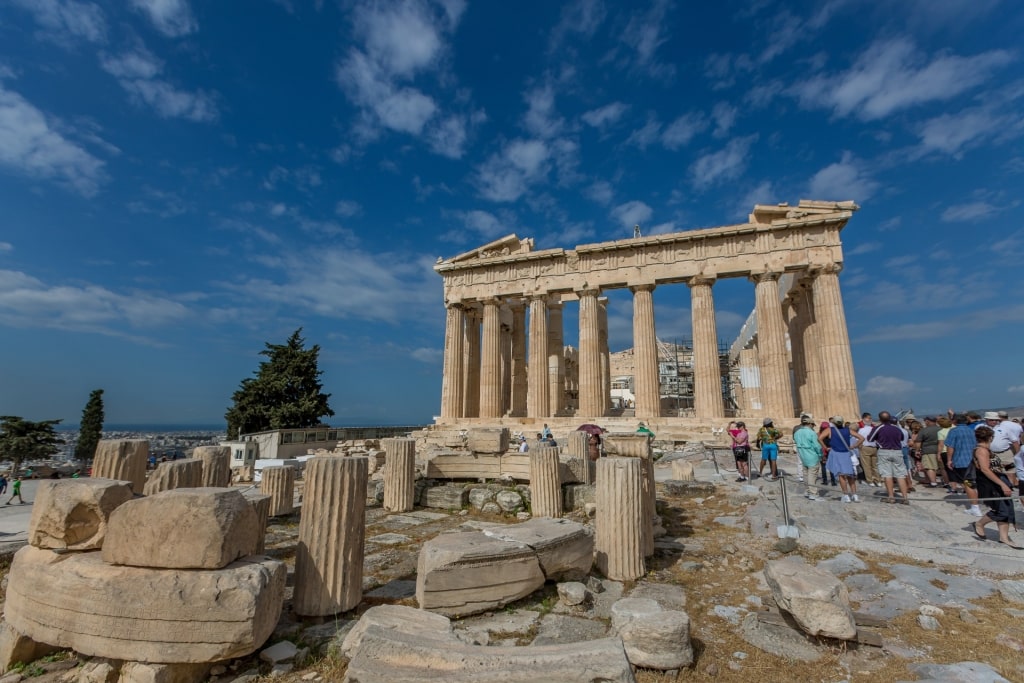
Parthenon in Athens, Greece
There are towering mountains, some said to have been the home of the Gods, deep valleys and vast lakes on the mainland. In Athens, you’ll be struck by the sheer beauty of the Parthenon, perched on top of Acropolis Hill.
And then there are the islands—and what islands they are. Greece is home to more than 2,000 of them.
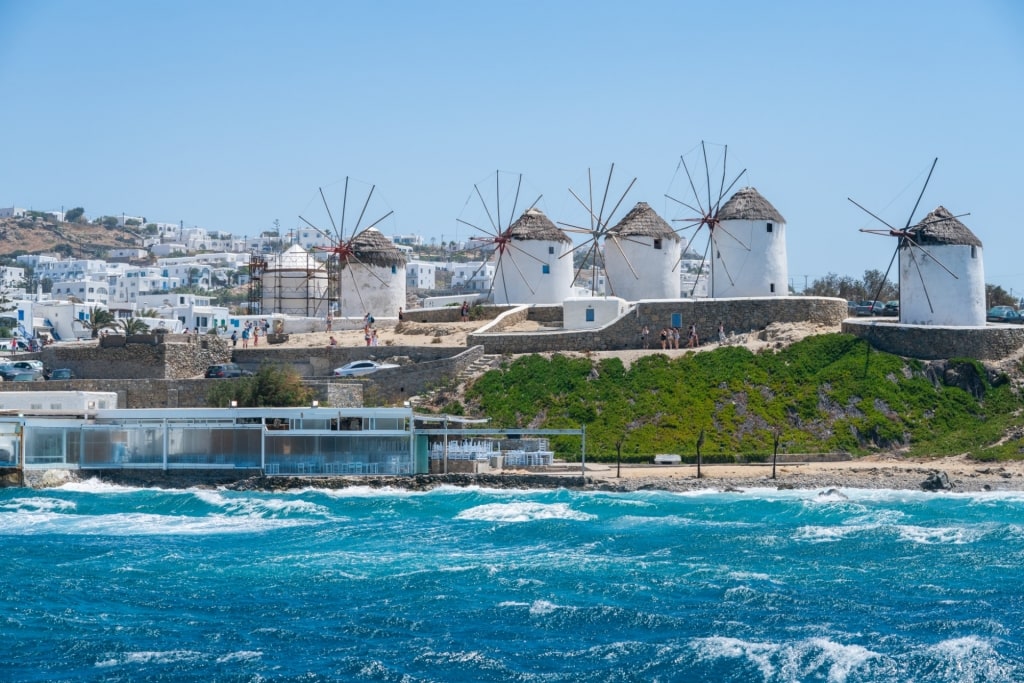
Little Venice in Mykonos, Greece
Visit Santorini, set atop a sunken volcano, tiny villages of white-washed cubist houses perched on towering cliffs. Or pretty Mykonos, where in the Little Venice neighborhood, the old fishermen’s houses kiss the sea.

Chania, Greece
Crete meanwhile is so vast, it could almost be a country of its own and retains its own beauty thanks to locations such as the Old Venetian harbor at Chania and the breathtaking Samaria Gorge, one of Europe’s best and most challenging hikes.
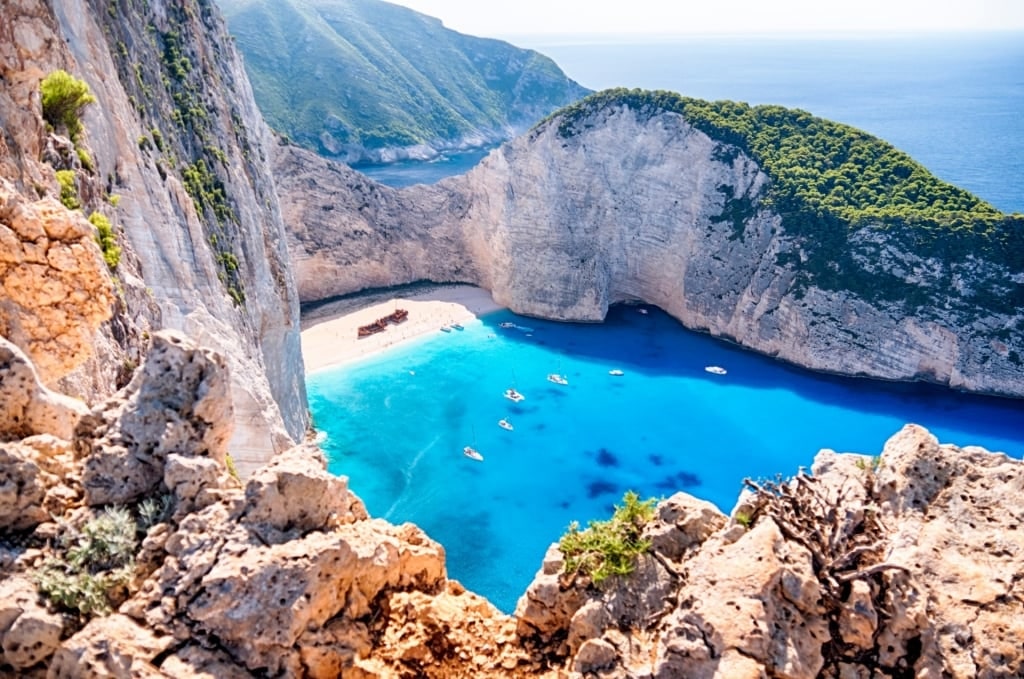
Shipwreck Beach in Zakynthos, Greece
Islands of the Ionian Sea to the west are more verdant here and the architecture more Italianate thanks to many years of Venetian rule. Stand-out sights include Corfu’s gorgeous Old Town and the incredible Shipwreck beach on Zakynthos.
Spain

La Sagrada Família in Barcelona, Spain
With Mediterranean beaches, beautifully wild, mountainous interiors, World Heritage cities and volcanic islands, Spain offers a beguiling mix to travelers and is, without doubt, one of the most beautiful European countries.
Much like Greece, its history is long and varied with periods of rule by Visigoths, Romans and the Moorish Muslim caliphate all leaving their mark over the centuries, the latter particularly in Southern Spain.
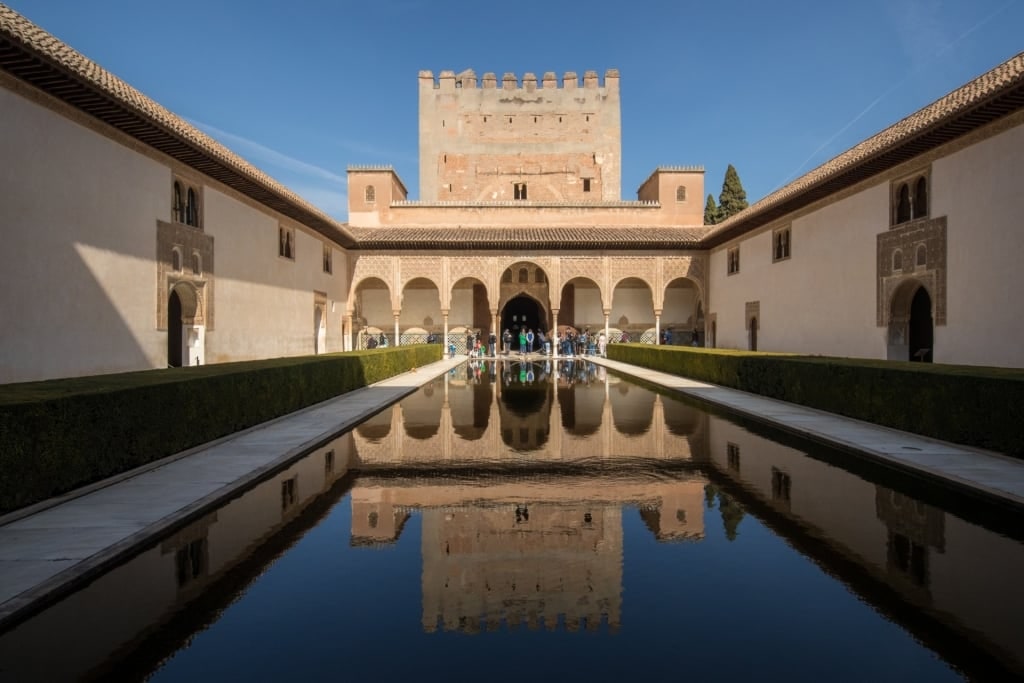
Alhambra in Granada, Spain
It’s here that some of the country’s most impressive Moorish architecture can be found, the most famous of which is probably Granada’s Alhambra.
A fortified complex of palaces, towers and gardens that dominates the skyline, the Alhambra rightfully takes its place as one of the Seven Wonders of the Muslim World.
The Alhambra can be visited from Malaga, the birthplace of one of the most famous artists of the 20th century, Picasso, and home to the Castillo de Gibralfaro, a ruined castle offering incredible vistas over the Alboran Sea to North Africa.
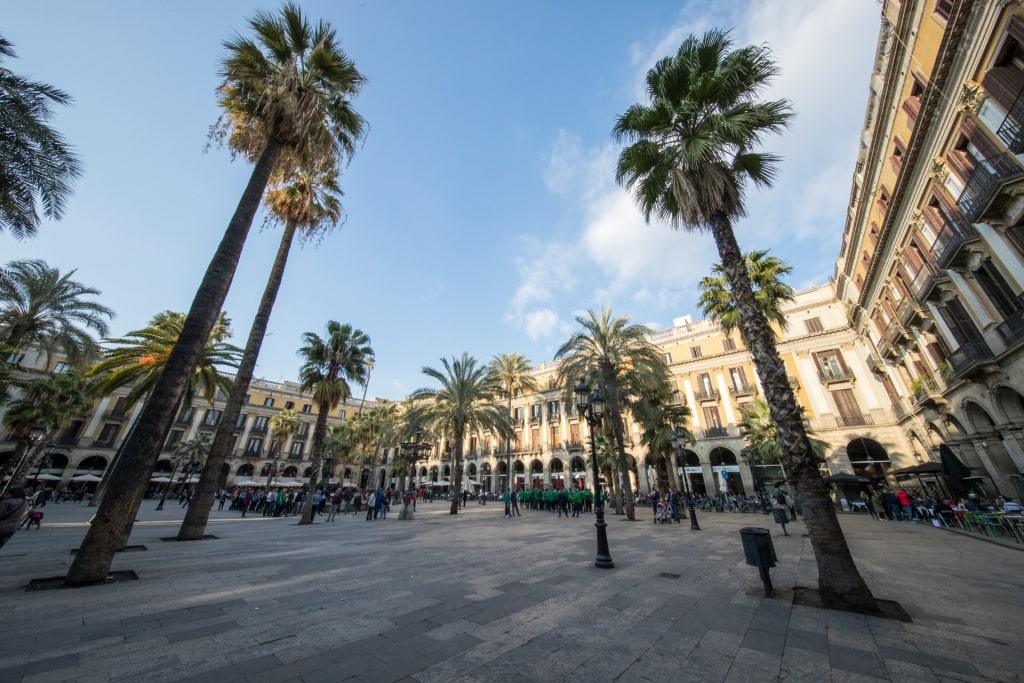
Gothic Quarter in Barcelona, Spain
The influence of Malaga’s most famous son can be seen to the north in his adoptive city of Barcelona, home to the extensive Picasso Museum, the evocative Gothic Quarter, and La Sagrada Família—the largest unfinished Catholic church in the world.
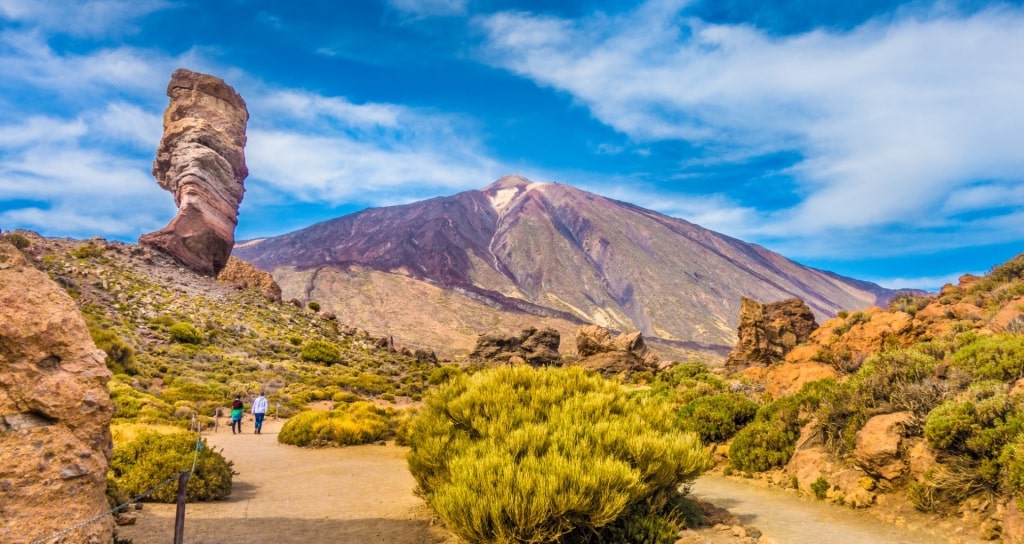
Mount Teide in the Canary Islands, Spain
Of course, Spain offers much beyond historic architecture. Its many islands are great places to find natural beauty, from craggy Ibiza to stylish Mallorca.
Off the coast of Africa, you’ll find the volcanic Canary Islands, home to magnificent Mount Teide, standing at more than 12,000 feet. The surrounding national park offers incredible hiking in almost lunar-like landscapes.
Ireland
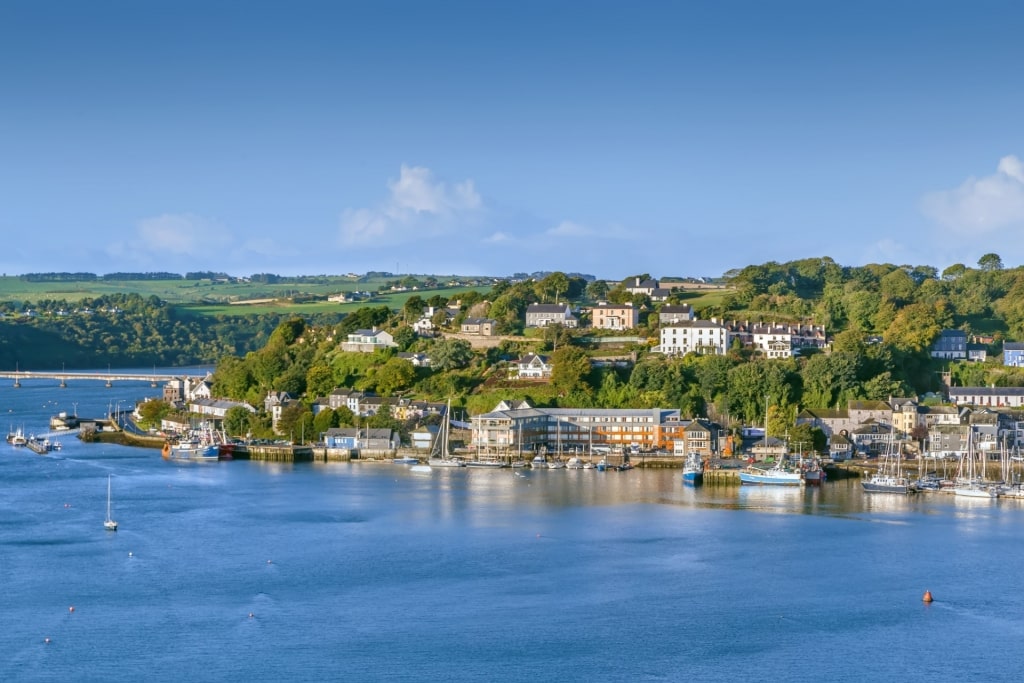
Kinsale, Ireland
When thinking of Ireland, for most people, Dublin will spring to mind. While the Irish capital is abuzz with culture and an incredible pub scene, much of Ireland’s natural beauty lies on its west coast along the incredible Wild Atlantic Way driving route.
Starting at the impossibly picturesque town of Kinsale, just south of Cork, it winds its way up the island’s western seaboard in a series of towering cliffs, craggy coves and vast beaches.
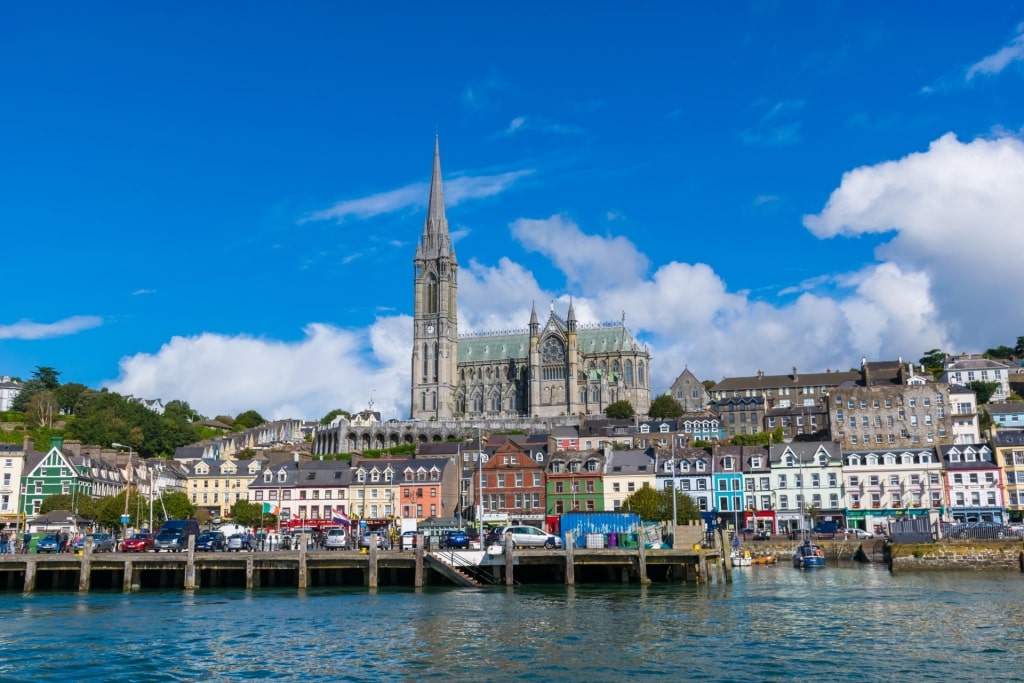
Cobh, Ireland
Back in Cork, the port of Cobh is famed as the last port of call of the ill-fated Titanic and the pushing-off point for 19th-century emigration to America, but also for its brightly colored houses that lead up the hill to the imposing Gothic Revival Cobh Cathedral.
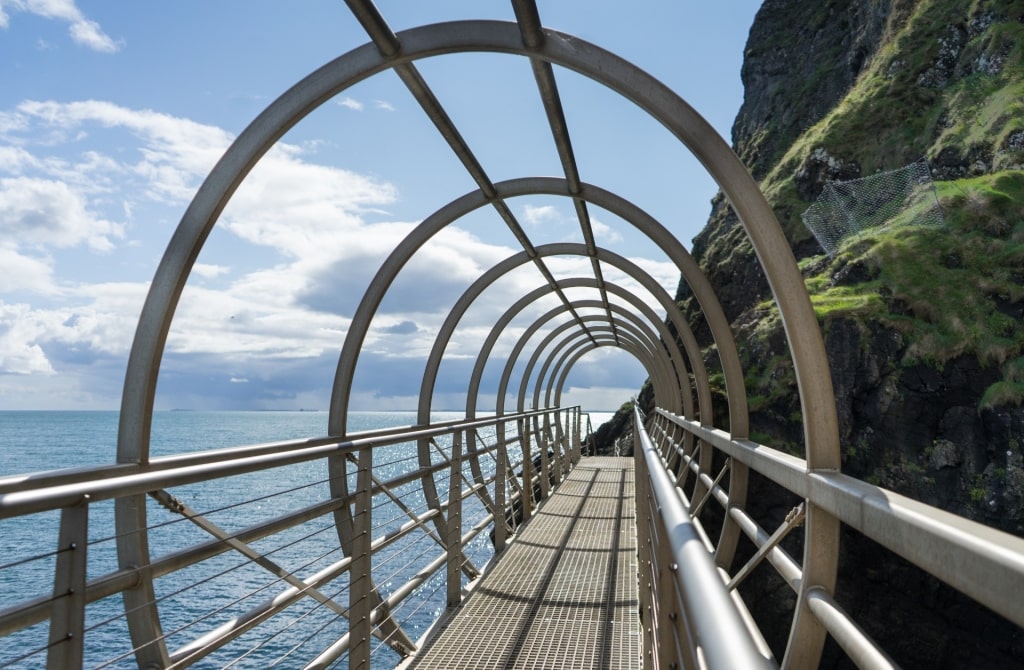
Gobbins Coastal Path, Ireland
There is much to admire over the border in Northern Ireland too, which is also famed for its dramatic coastline which includes Gobbins Coastal Path, a wild cliff face walk that includes a series of bridges offering birds-eye views over deep sea caves and the crashing waves below.
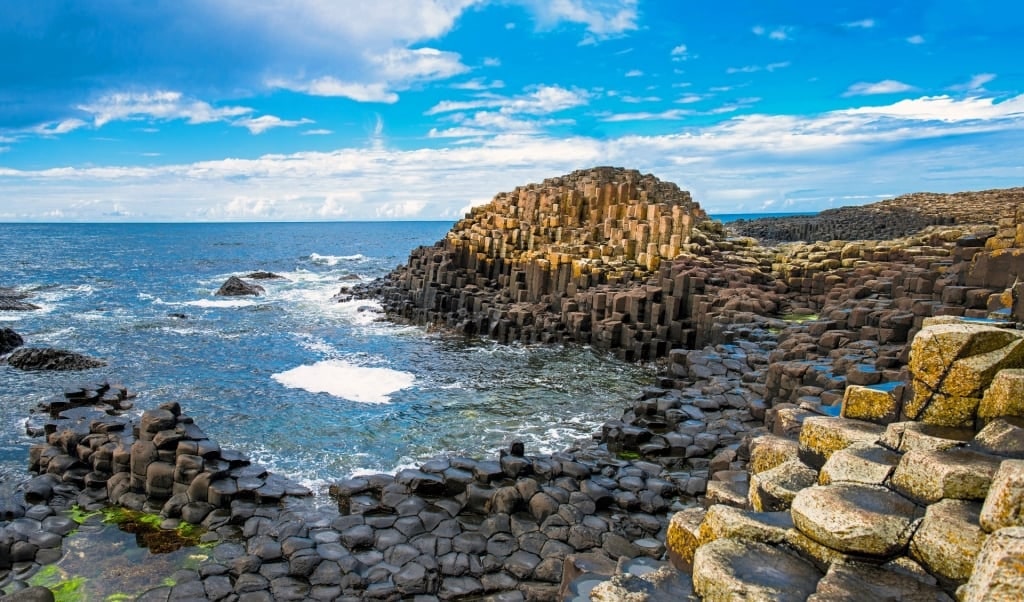
Giant’s Causeway, Ireland
Some 60 miles north of Gobbins is another of Ireland’s icons, the famed Giant’s Causeway. One of the best places to visit in Ireland, this 33-mile stretch of coast is home to more than 40,000 basalt columns formed more than 60 million years ago thanks to an ancient volcanic eruption.
A UNESCO World Heritage Site, it was once voted the fourth greatest natural wonder in Great Britain.
Iceland
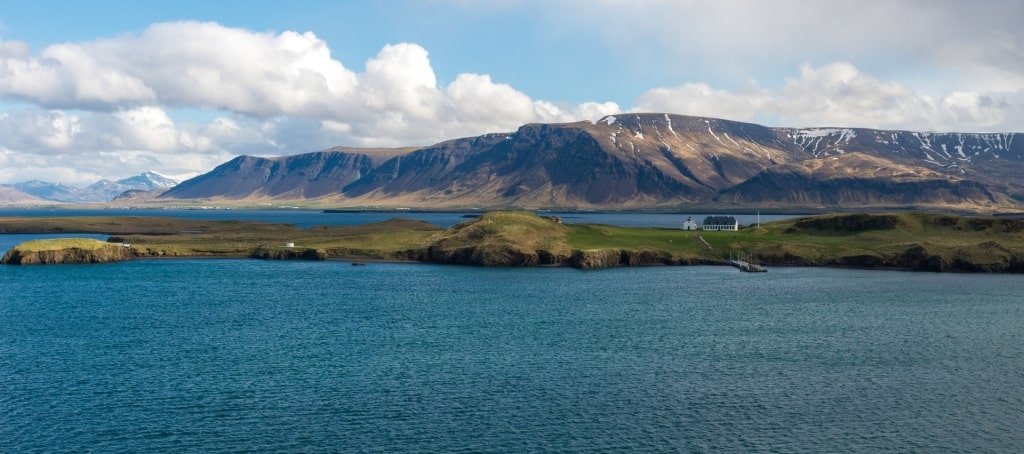
Reykjavik, Iceland
A visit to Iceland is a little like visiting another planet rather than another country, simply because it is so jaw-droppingly different to anywhere else in Europe.
Almost entirely volcanic, outside of the cities, towns and villages, the landscape is one of towering peaks, deep valleys, rocky coastlines and lunar landscapes.
Reykjavik, the capital, is a pretty port town with jauntily colored homes and iconic buildings such as Perlan, a futuristic dome housing a fine-dining restaurant, and Hallgrímskirkj, a church shaped like a Viking longboat.
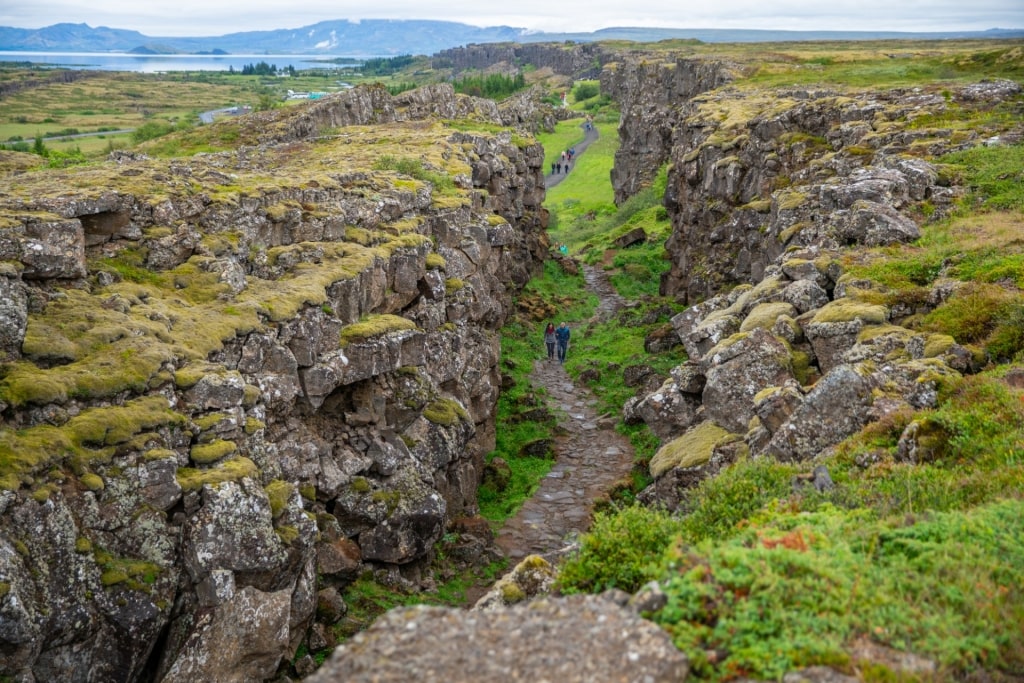
Thingvellir National Park, Iceland
But it’s outside of town that some of the country’s stand-out sights lie on a route known as the “Golden Circle”. Thingvellir National Park sits in a rift valley between two tectonic plates and centers around Thingvallavatn, Iceland’s second-biggest lake and site of the country’s original parliament.
It is home to hiking trails past the lake, crashing waterfalls, and the ruins of several old stone shelters, all set against the most dramatic of landscapes.
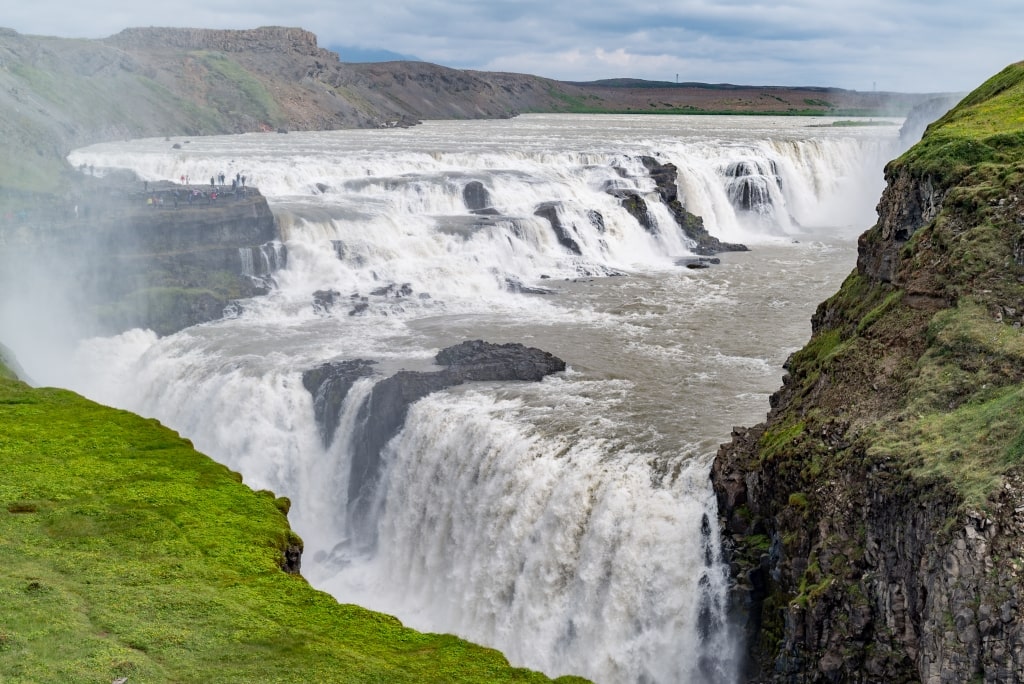
Gullfoss Waterfall, Iceland
To get a sense of true natural power and wild beauty during your European adventure, the other two stops on the Golden Circle are a must. Gullfoss waterfall crashes down an ancient valley from a height of 105 feet. The incredible sprays these powerful falls creates produce the most spectacular rainbows on a sunny summer’s day.
A short drive away is the Geysir Geothermal Area, home to the Great Geysir, the earliest geyser documented on record. While it rarely erupts today, neighboring Strokkur sprays water some 130 feet into the air around every 10 minutes, providing the kind of show that only nature can create.
Italy
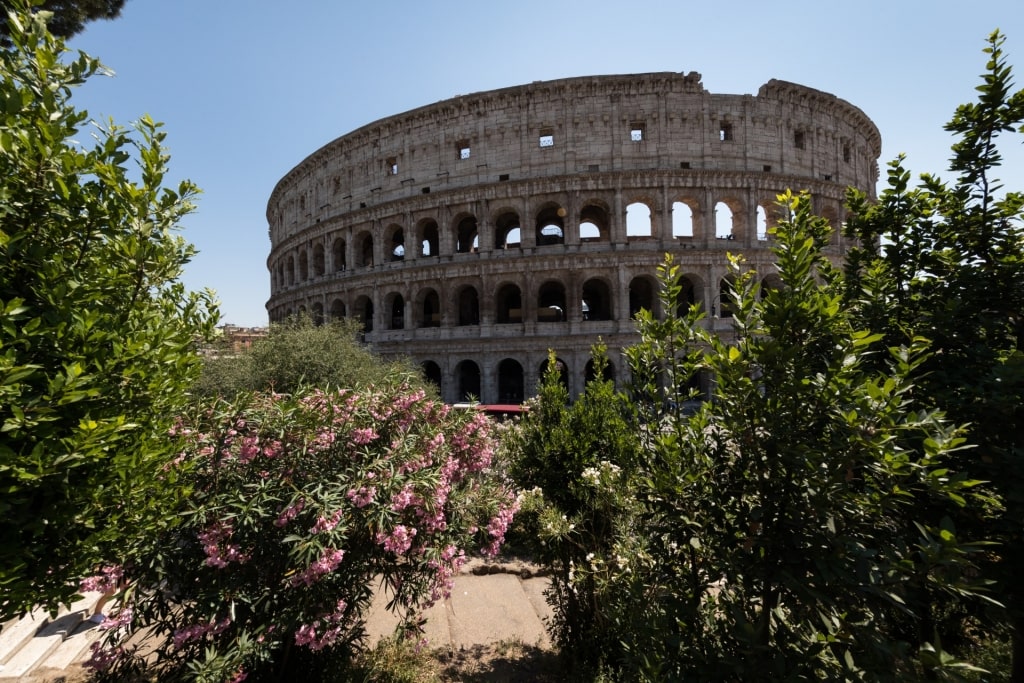
Colosseum in Rome, Italy
Italy is home to some of the most beautiful buildings and artwork in the world. Rome’s famous landmarks such as the Colosseum are rivaled only by those in Athens for their majesty.
The city-state of the Vatican, home to the Pope and the headquarters of the Catholic Church, houses truly iconic art and architecture, including the incredible Sistine Chapel, the location of Michelangelo’s famous ceiling.
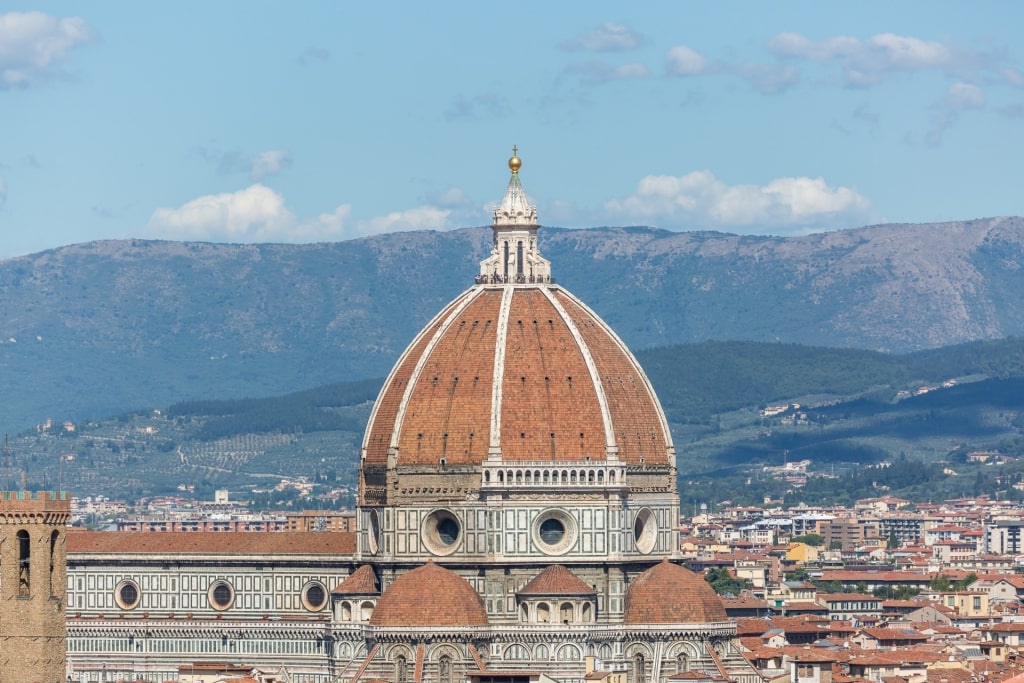
Cathedral Santa Maria del Fiore in Florence, Italy
Florence, meanwhile, feels like a cross between a movie set and a living, breathing museum. The Cathedral Santa Maria del Fiore, also known as the Duomo, is said to be the third largest church in the world and has an elaborate 17th-century façade in the Gothic Revival style.
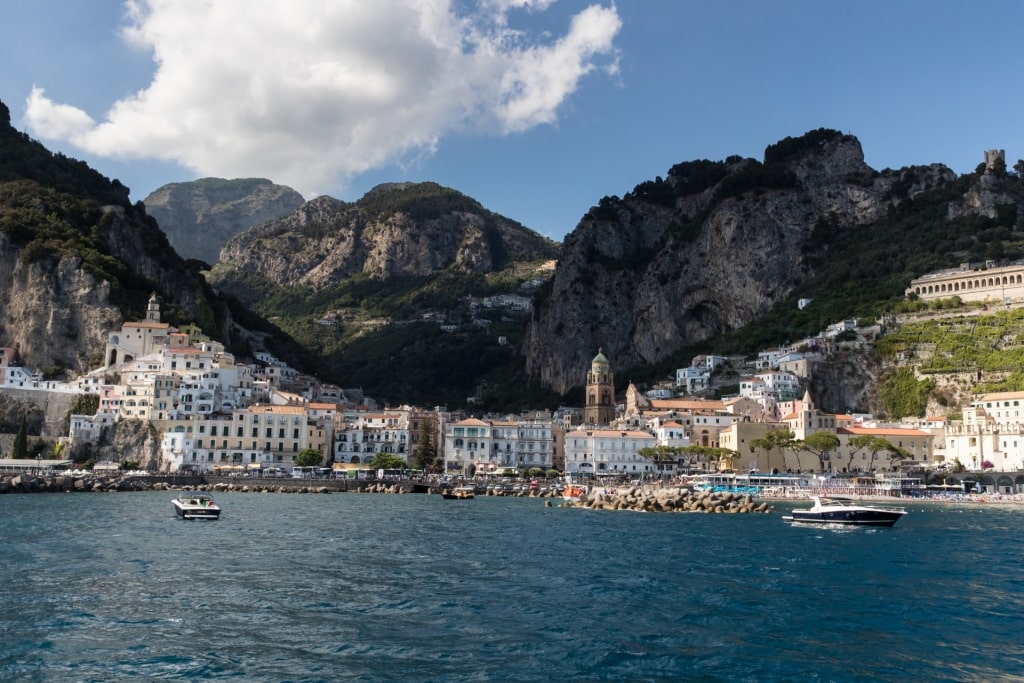
Amalfi Coast, Italy
For natural beauty, the country’s southwest is unmatched: driving down the lemon-scented Amalfi Coast sees every switchback reveal another celebrated view.
The first sights of either Mount Vesuvius in Naples or Mount Etna in Sicily are truly jaw-dropping events, given the impressive majesty of both volcanoes.
Norway
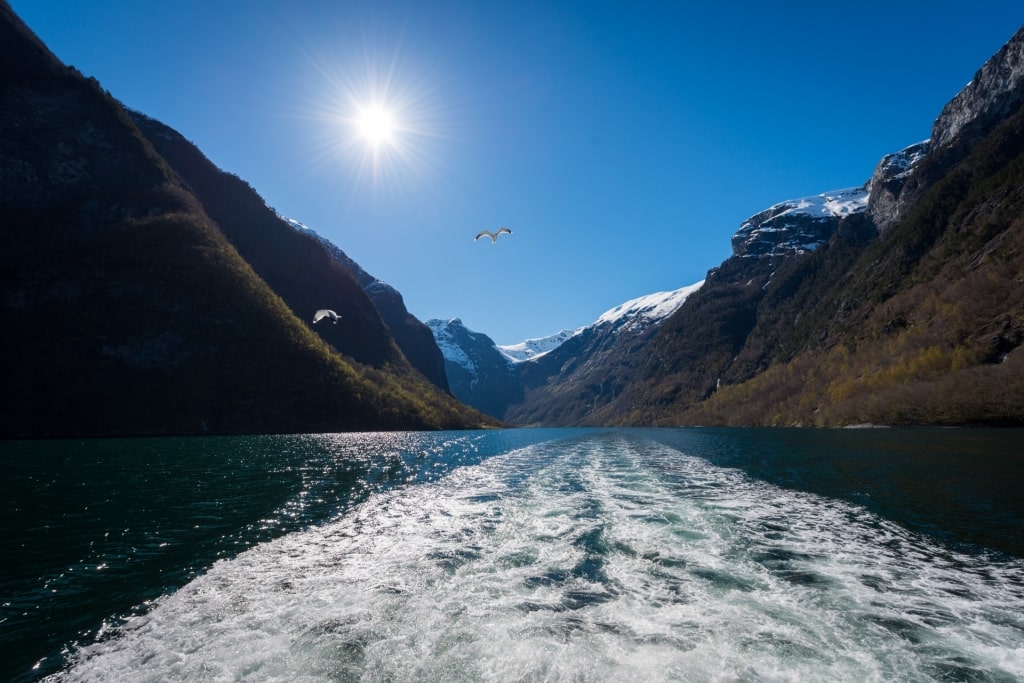
Nærøyfjord, Norway
Nowhere can match the incredible fjords of Norway for their serene beauty, ribbon-like waterfalls tumbling down dramatic cliffs, against a backdrop of snow-capped mountains.
The country’s longest and deepest fjord, Sognefjord, branches into two equally impressive smaller arms, Aurlandsfjord and Nærøyfjord.
Aurlandsfjord, the eastern branch of the two, is known for its steep railway, the Flamsbana, that climbs to the village of Flam with its pretty natural harbor and 17th-century church passing gushing waterfalls along the way. The journey is believed to be one of the most beautiful railroad trips in the world.
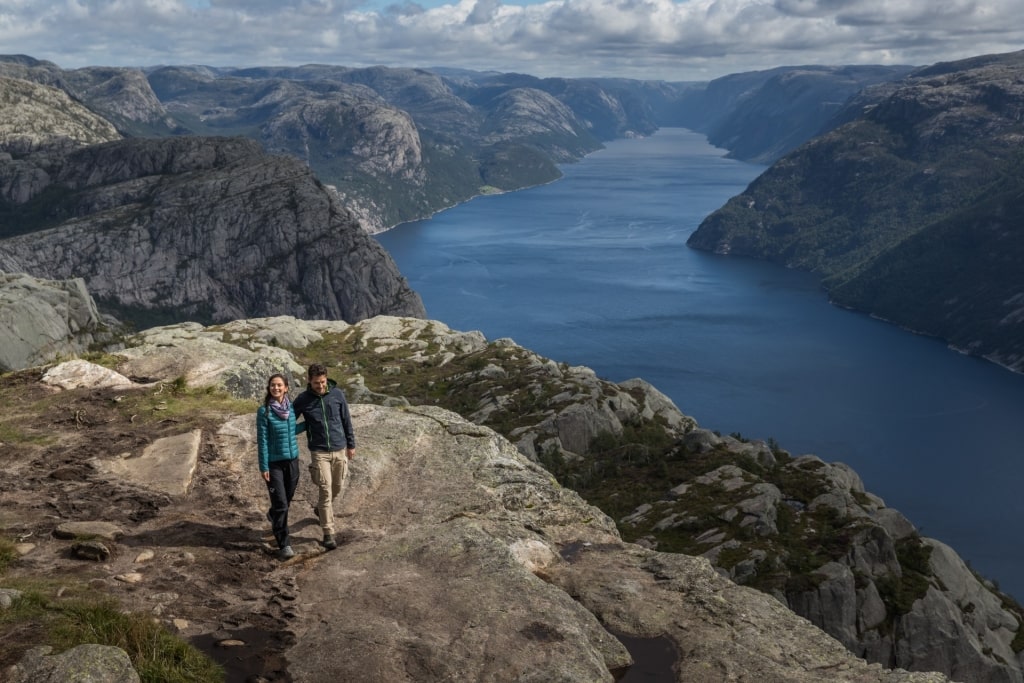
Pulpit Rock, Norway
Homage to the beauty of Norway’s fjords can also be paid at Preikestolen (The Pulpit Rock) a flat outcrop that offers a natural viewing platform as it towers almost 2,000 feet above Lysefjord.
The hike to the summit is a challenging one on a precipitous path but is rewarded with vertiginous views of the waters below.
Read: Best Places to Hike in Norway
Scotland
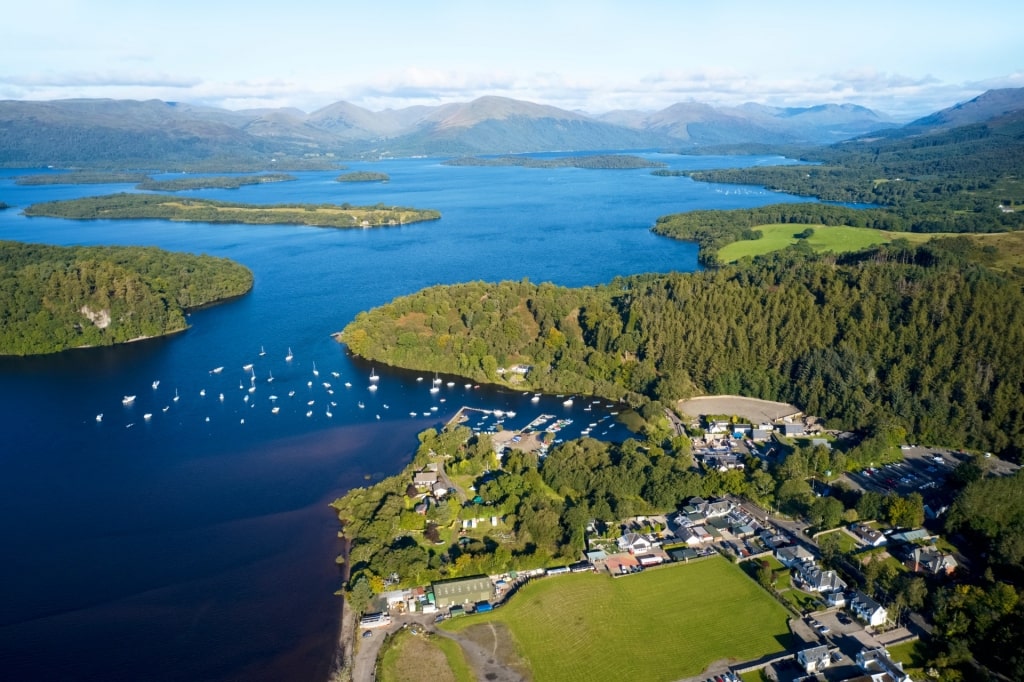
Loch Lomond, Scotland
The beauty of Scotland lies more in its wild ruggedness, rather than it being impossibly pretty.
Towering monroes (as peaks of more than 3,000 feet are called here) windswept moors, and steep-sided valleys of verdant green line the interior, while the coast’s magnificent white sand beaches could well be in the Caribbean if the water were warmer.
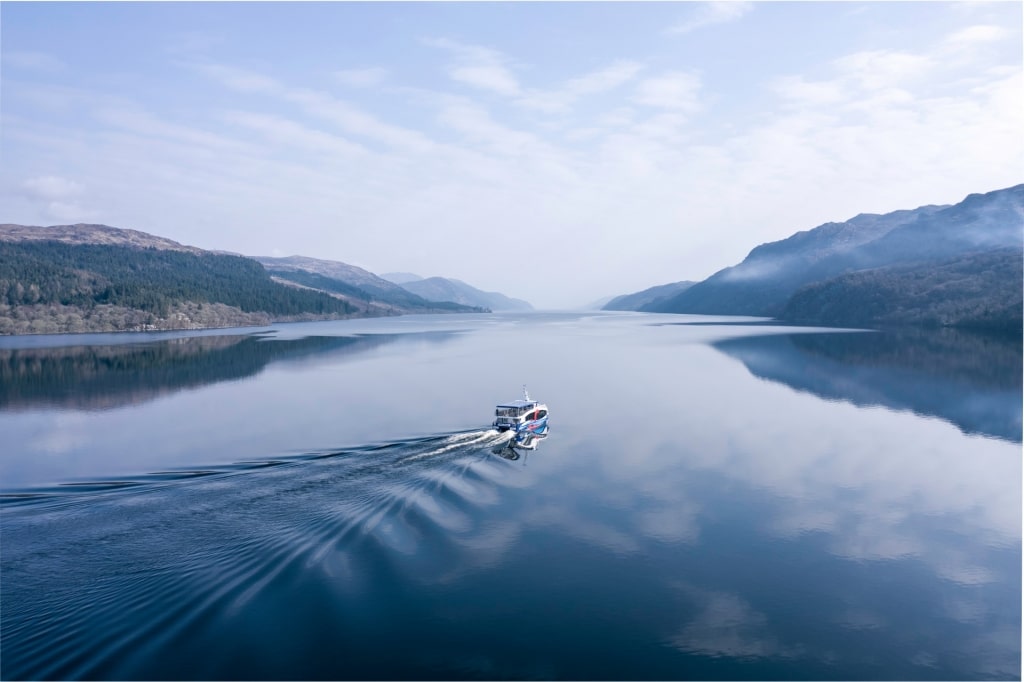
Loch Ness, Scotland
And then, of course, there are the mighty lochs. Loch Ness, just outside the town of Inverness is, of course, the most famous.
You might not see the legendary monster Nessie here, but head out on a boat from the town center and at the point where the River Ness empties into the loch, an incredible landscape opens up ahead of you as the vast expanse of water unfolds.
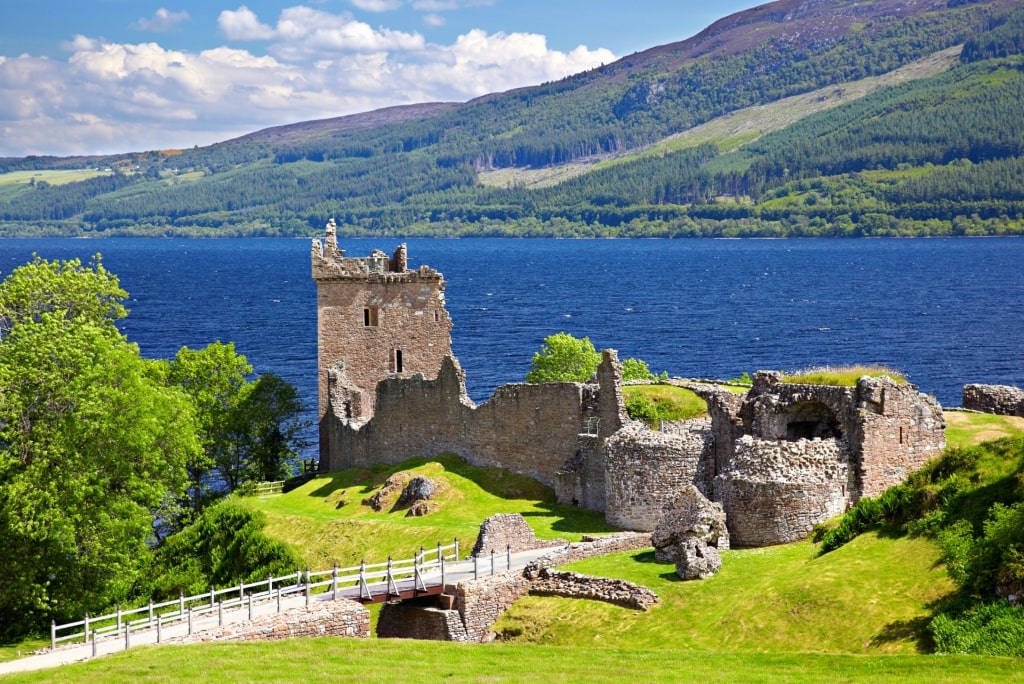
Urquhart Castle, Scotland
Urquhart Castle, a 13th-century ruin on the loch’s edge only enhances the sheer sense of mystery included in a journey here.
Head right across the country to the southwest to find Trossachs National Park, home to the “bonnie, bonnie banks” of Loch Lomond and a region with some of Europe’s most spectacular vistas.
You’ll see Inversnaid Falls, Ben Lomond, its summit usually hidden by mist, and gorgeous Loch Katrine which looks particularly beautiful when framed by a setting sun.
Portugal
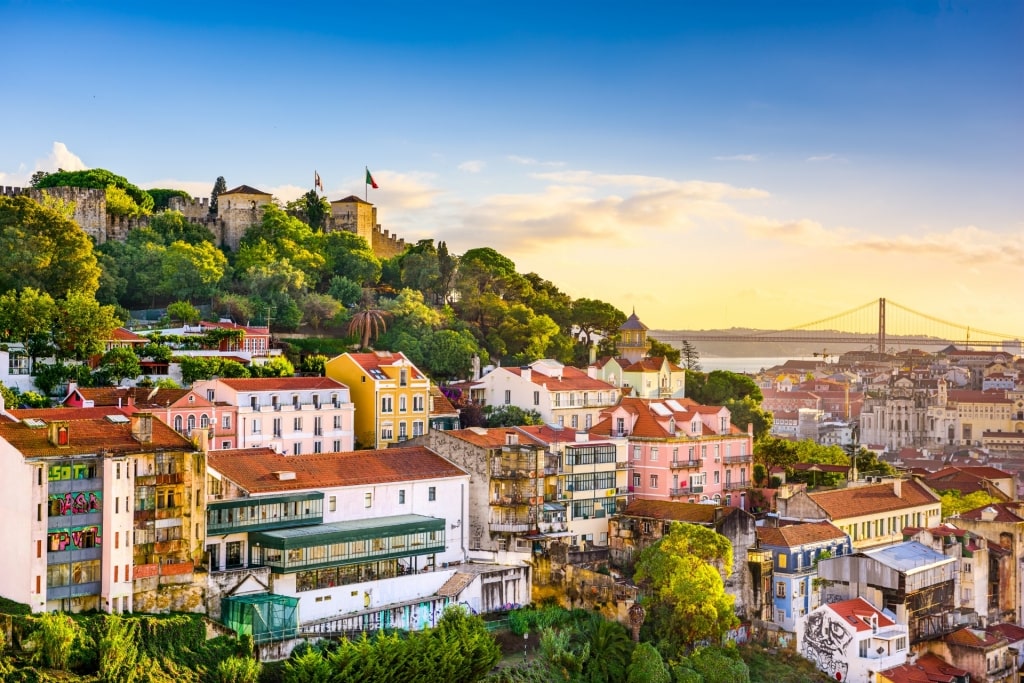
Lisbon, Portugal
The lovely Portuguese capital of Lisbon is as handsome a city as you’ll come across on Europe’s Atlantic coast.
Set at the mouth of the Tagus estuary, its pastel-colored buildings, many lined with decorative ceramic tiles, seem to tumble down the hill that leads from eighth-century São Jorge Castle to the port below.

Parque Natural da Arrábida, Portugal
South of the capital, Parque Natural da Arrábida is a coastal park and home to mountains, ancient forts and iconic white chalk cliffs that dip into the azure Atlantic.
To the north lies the country’s second city Porto, home to the haunting medieval Ribeira (riverside) district with its narrow, cobbled streets, old merchants’ mansions, and bars serving wine from the local estates.
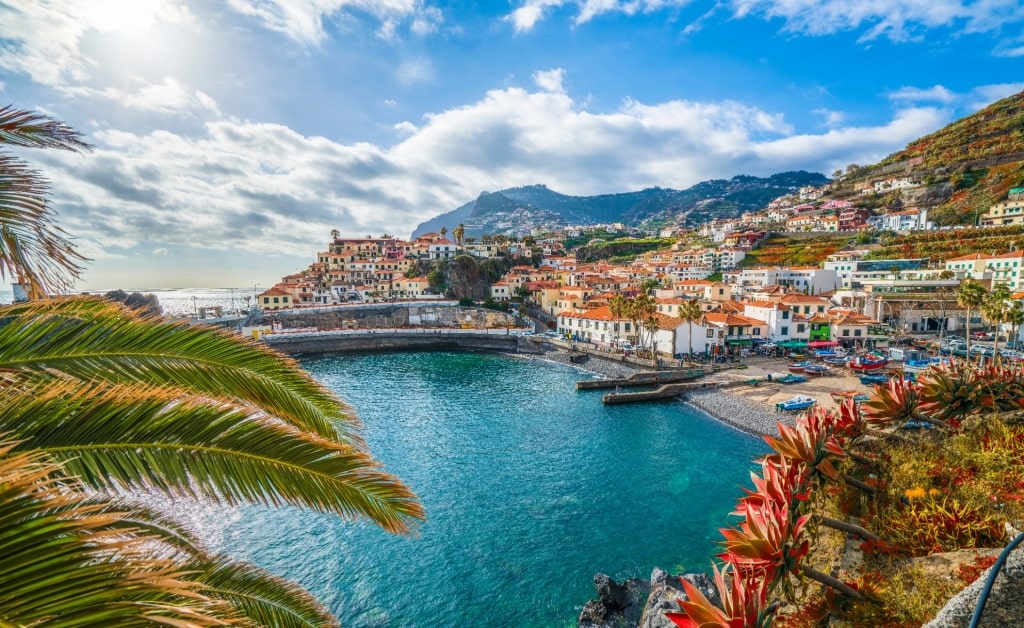
Camara de Lobos in Madeira, Portugal
Away from the mainland, there’s much beauty on Portugal’s islands too. The coastal village of Camara de Lobos, outside Madeira’s capital Funchal, is so pretty it is said to be the place that inspired Winston Churchill to take up painting.
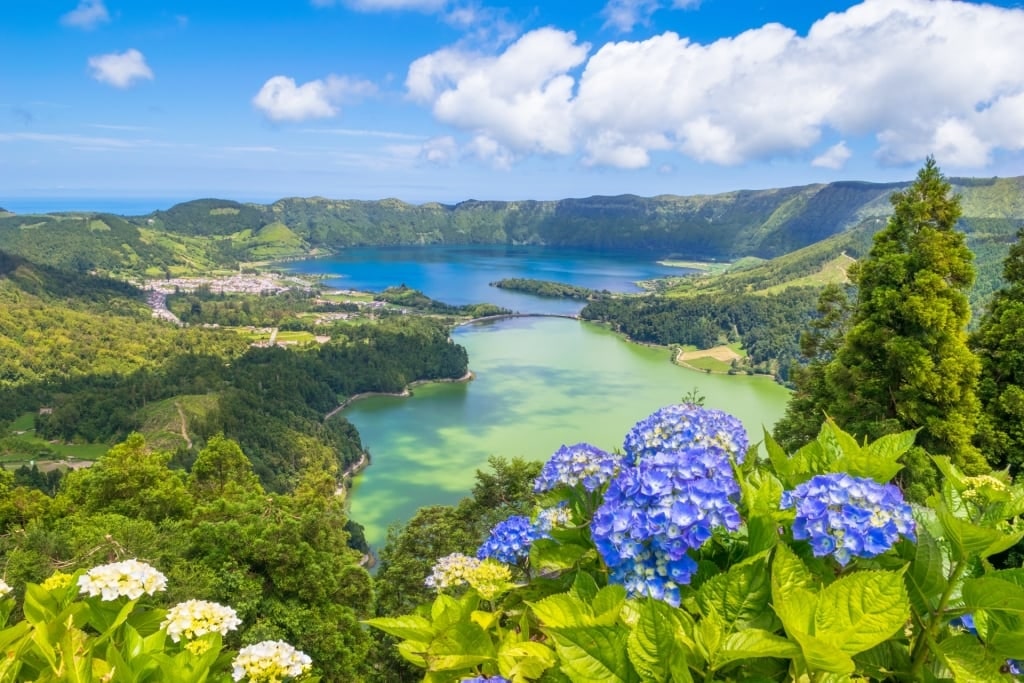
Sete Cidades in Azores, Portugal
Meanwhile, in the Azores, the city of Sete Cidades is one of the crown jewels of the remote archipelago and is set on the shore of Lake Azul, which sits in a flooded volcanic crater.
Sweden
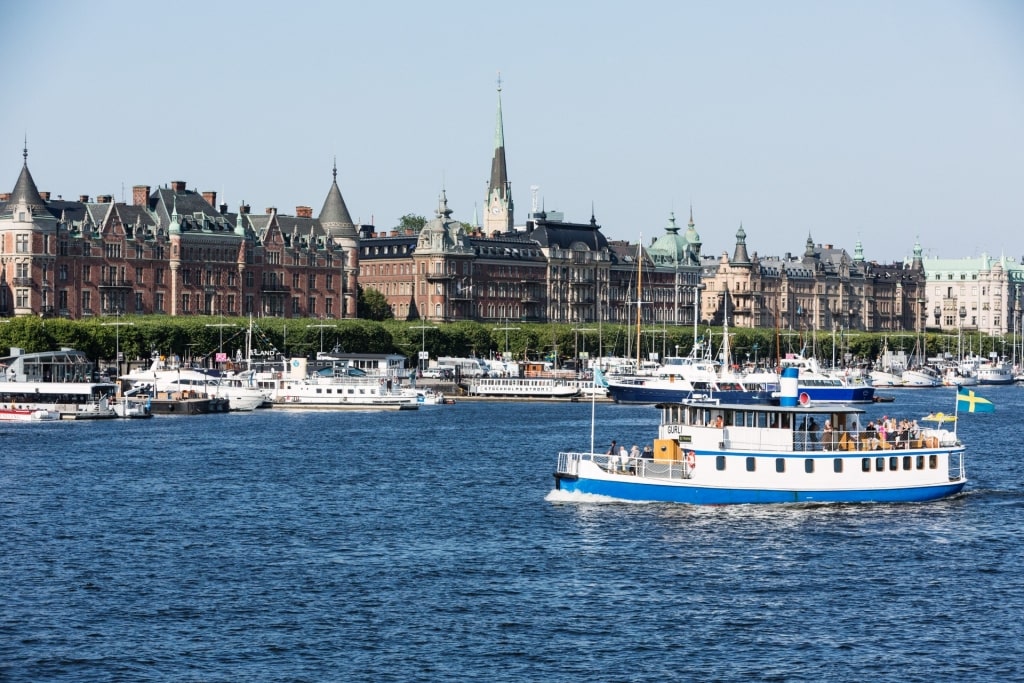
Stockholm, Sweden
Sweden is one of the most beautiful European countries, and you don’t have to venture far from Stockholm to find its prettiest places.
One of the best capital cities in Europe, Stockholm sits in an enchanting archipelago set in the Baltic Sea, made up of some 30,000 islands and islets, of which only 1,000 are inhabited.
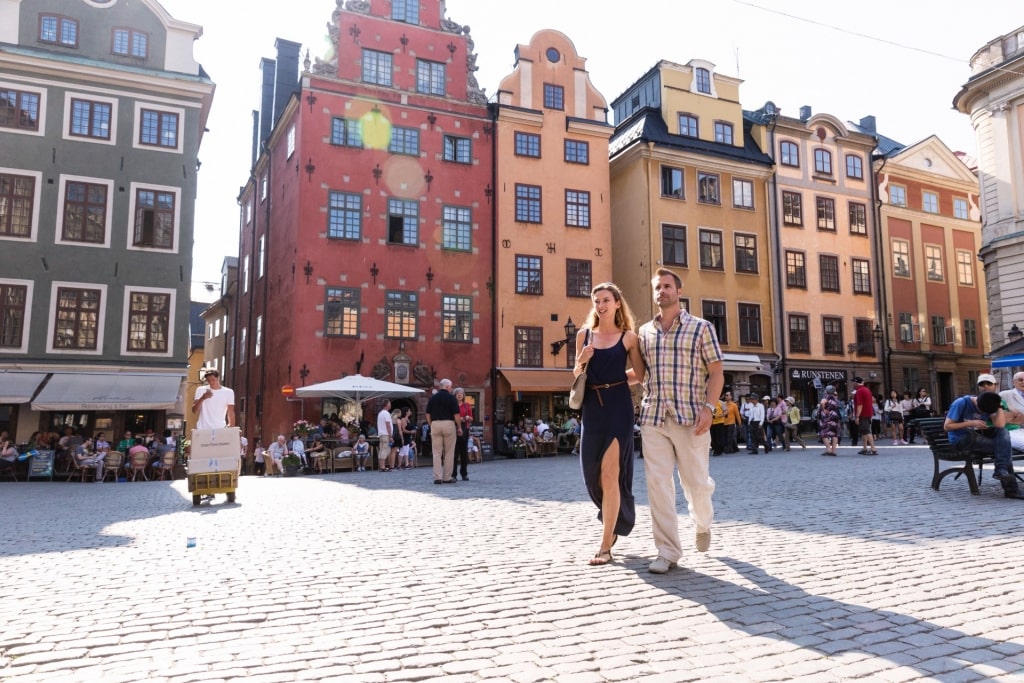
Gamla Stan in Stockholm, Sweden
Back in the city itself, the old town of Gamla Stan is the place to visit. Set on its own island, it features a maze of cobbled streets lined with brightly colored houses dating from the 17th and 18th centuries.
Gamla Stan is also home to the Royal Palace, the 13th-century Riddarholmen Church, and the Nobel Prize Museum, one of the best museums in Stockholm. Yet another stunning location in the archipelago is Drottningholm Palace, a 17th-century Royal residence on the island of Lovön.
Read: What Is Sweden Known For?
France
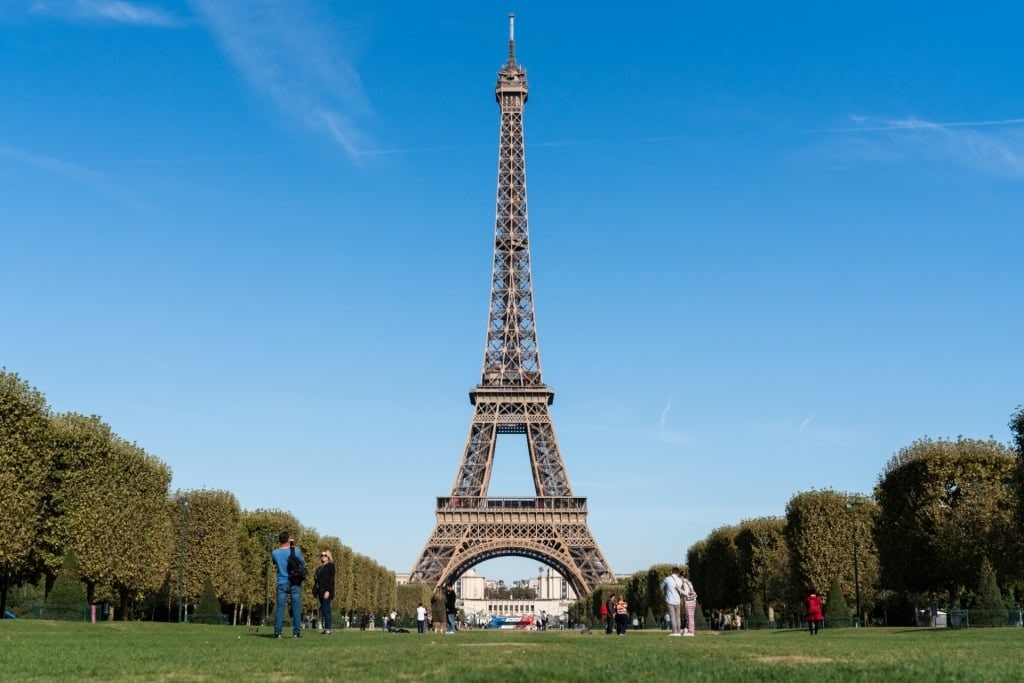
Eiffel Tower in Paris, France
Stretching from the Côte d’Opale sitting across the English Channel from the UK in the north, to the super-glamorous Côte d’Azur in the south, France is filled with gorgeous landscapes to explore.
As you explore one of the most beautiful countries in Europe, you’ll find rolling vineyards, fields of lavender, and rugged mountains.
But a trip to France reveals much more than just natural beauty: its metropolises are home to incredible architecture that set the 17th-century tone that many other European cities coveted and then copied.
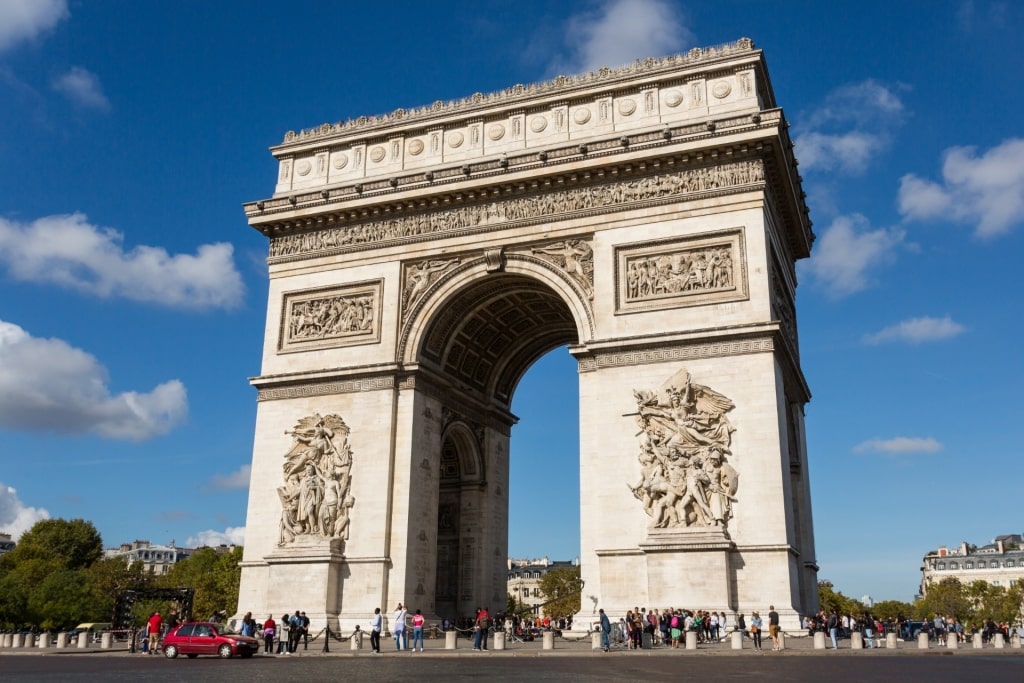
Arc de Triomphe in Paris, France
In Paris, wide boulevards are lined with iconic sights. The Arc de Triomphe, the Eiffel Tower, and the Louvre museum’s unique pyramid entrance juxtaposed with the Gothic finery of the main Louvre Palace are just three to whet the appetite.
A short drive away from the city reveals another icon, the Palace of Versailles, a former Royal residence and World Heritage Site, and considered one of the finest examples of 17th-century architecture on the continent.
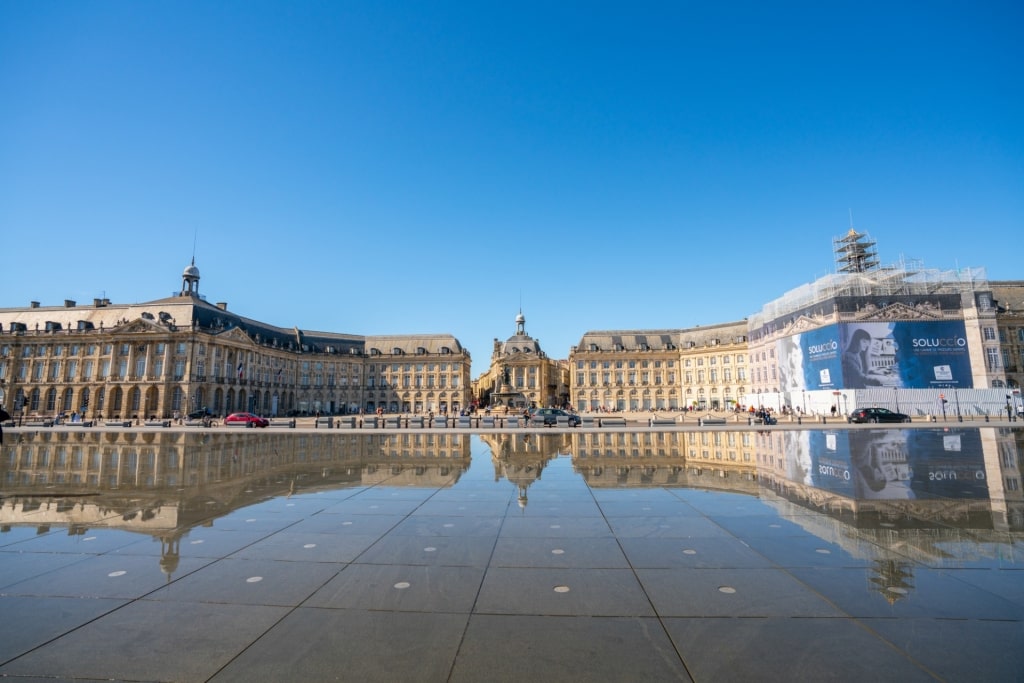
Bordeaux, France
On the west coast, you’ll find elegant Bordeaux, curving in a half-moon around a bend of the Garonne river, with rolling vineyards stretching in every direction. To the south, in chic Cannes, you can stroll along the impressive Promenade de la Croisette, soaking up the city’s glamor.
Read: Why a Cruise Is the Best Way to Travel in Europe
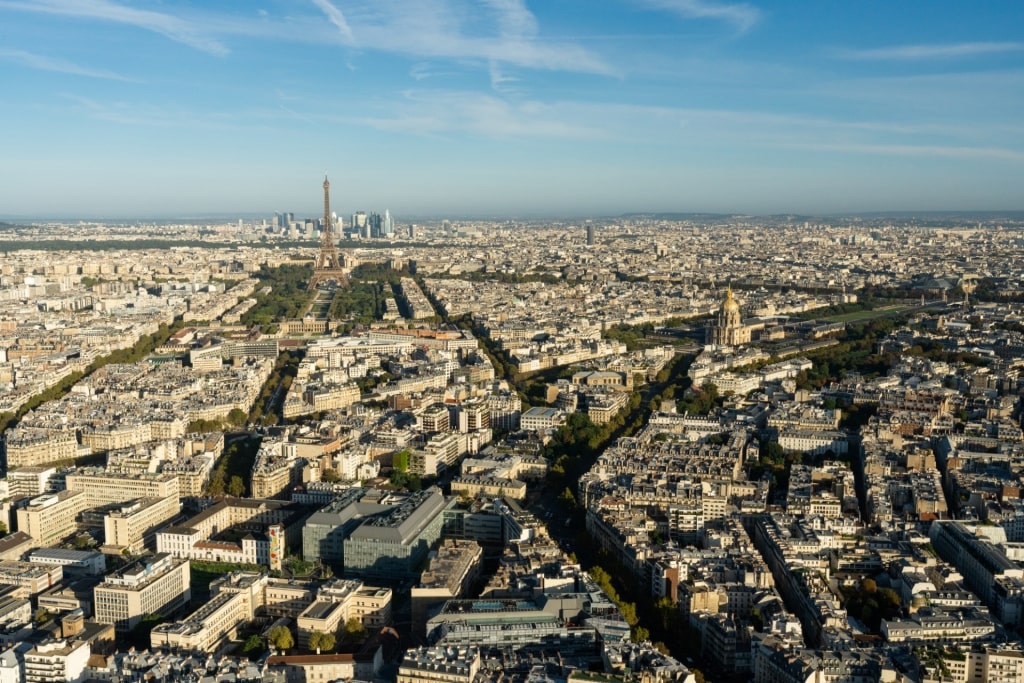
Paris, France
Are you inspired to visit Europe and take in some of the most beautiful countries in the world? Browse Celebrity’s European cruises and book your next adventure.



